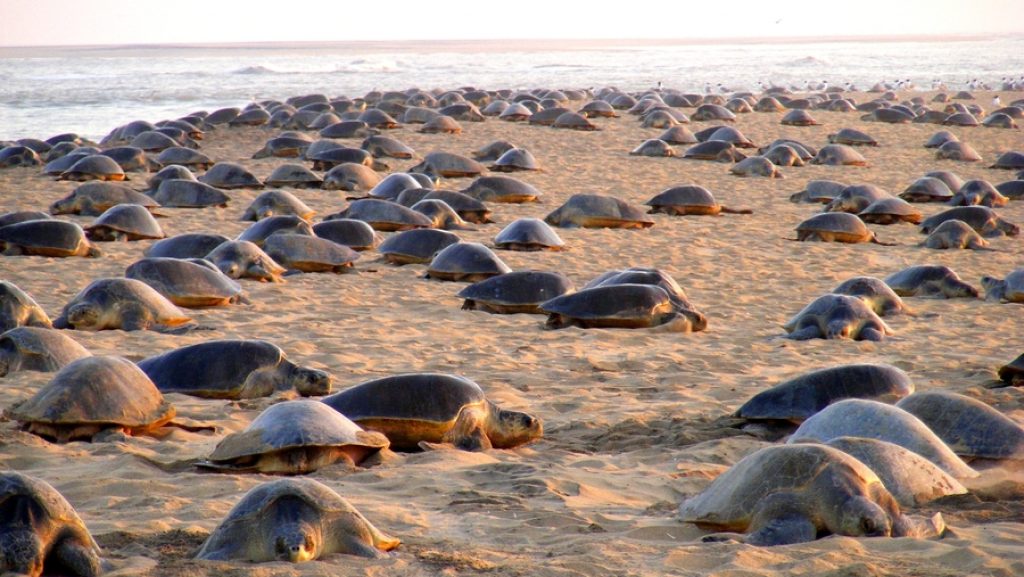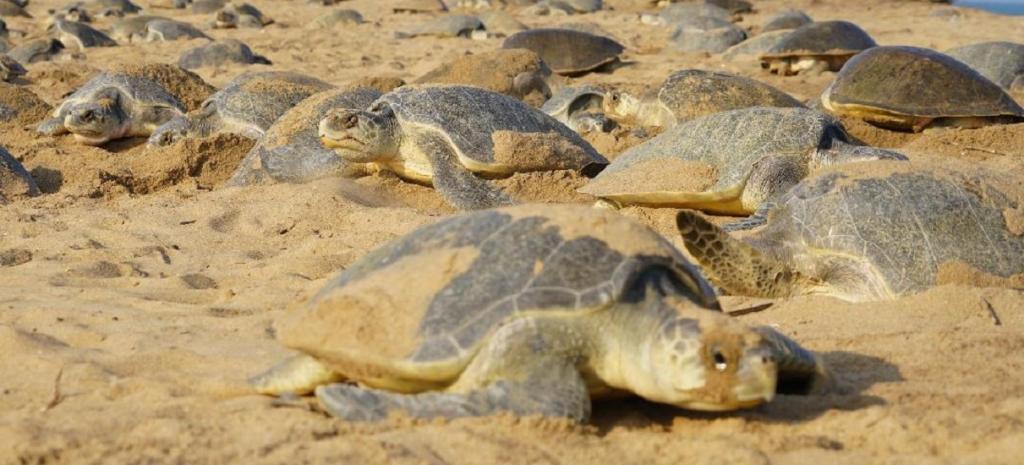Olive Ridley Discover New Home, As Literal Drift Ups A New Nesting Site

Bhubaneswar, Mar 29: Following lateral drift near the confluence of Rushikulya River in the Bay of Bengal in Odisha’s Ganjam district, Olive Ridley turtles this year have managed to find new home for them.
These turtles although faced massive soil erosion due to hazardous climatic conditions they found their rookery for laying eggs safely keeping an eye upon the prior atmosphere. Wildlife enthusiasts have time and again raised concerns over the sea erosion and shifting course of the ocean triggered by changing climatic conditions, stating that it may create problems for the turtles as climbing up the beach for nesting will be tough for them.

After crawling up those sandy beach, the female turtles dig a pit in the sand with their front flippers and lays eggs. The pit is covered by the mother turtle before they return to the sea. A turtle lays around 100 to 150 eggs and covers each hole before sunrise as they return to the sea. The mother turtle does not wait to see the hatchlings emerge about 45 to 50 days after nesting. Which is known as the gestation period.
The erosion and course shifting has, however, been going on since years, as a result of which the Rushikulya river mouth has now pierced through the beach, dividing it into two halves.
While one half continues to be the main beach, the other has turned into an island spread like a huge dune across five kilometres in front of Gokharkuda and Podampeta points. For the turtles, fortunately, the island is now a fresh nesting destination.

Notably, this year marked a record mass nesting of endangered Olive Ridley turtles at Rushikulya beach . On Sunday night, a record 1,14,305 Olive Ridley turtles arrived at the Rushikulya river mouth for their annual mass nesting after having found a new nesting site.






